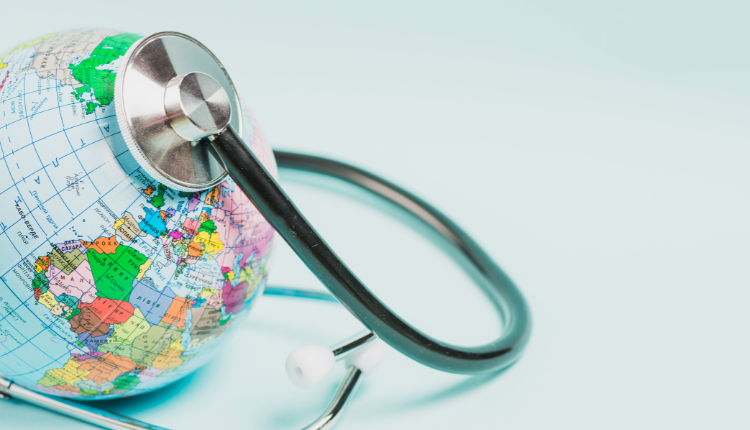International research partnerships, cross-border clinical trials, and trans-national patient care have made healthcare a global endeavor. However, language barriers continue to present significant challenges.
As the global healthcare system grows in scale and complexity, the need for accurate, culturally sensitive, and accessible communication has become increasingly urgent. Translation services have emerged as a strategic solution—bridging linguistic divides, ensuring regulatory compliance, and fostering equitable access to care.
What is Medical Translation?
The demand for translation in healthcare is no longer confined to international contexts. Even within single countries, rising immigration, medical tourism, and increasingly diverse patient populations have heightened the need for multilingual communication. A survey-based study found that 49% of patients who did not speak the local language faced difficulties understanding medical situations. Misunderstandings related to medication labels and usage were other reported challenges—which can compromise outcomes and erode trust in the healthcare system.
Medical translation is the specialized practice of converting healthcare-related content from one language into another while preserving its clinical accuracy, regulatory intent, and cultural relevance. Unlike general translation, medical translation deals with highly technical, sensitive, and often life-critical information that requires not only linguistic fluency but also subject-matter expertise.
It covers a wide range of content, including:

The importance of medical translation lies in its direct impact on patient safety, healthcare equity, research integrity, and global collaboration. Here’s why it matters:
1. Ensures Patient Safety and Quality Care
- Accurate translations of prescriptions, diagnoses, and aftercare instructions prevent medical errors.
- Patients with limited English proficiency (LEP) receive clearer guidance, improving adherence and health outcomes
2. Enables Informed Consent and Ethical Compliance
- In clinical trials and treatment plans, patients must fully understand what they are consenting to.
- Poorly translated consent forms can lead to legal and ethical violations.
3. Facilitates Global Research and Innovation
- International studies rely on multilingual teams, documents, and participants.
- Consistent, precise translation supports data integrity, reproducibility, and global publishing.
4. Supports Regulatory Approval and Market Expansion
- Regulatory agencies require documentation in specific languages and formats.
- Accurate translations ensure compliance with standards (e.g., FDA, EMA, PMDA), avoiding delays that may affect or lead to rejection of regulatory approvals.
5. Promotes Health Equity and Accessibility
- Medical translation ensures that care is inclusive of linguistic minorities.
- This is vital in multicultural societies and humanitarian efforts, where language differences can become barriers to care.
In essence, medical translation is a foundation for safe, inclusive, and globally aligned healthcare systems. Without it, miscommunication can lead to mistrust, inefficiencies, and avoidable harm—both for patients and the industry at large.
Application Areas of Translation in Healthcare Collaboration
1. Multinational Medical Research
As clinical trials increasingly span multiple countries, the accurate translation of research materials becomes essential. Informed consent forms, investigator brochures, case report forms, and ethics board submissions all require localized versions to ensure participant understanding and regulatory compliance.
2. Patient-Centered Clinical Care
Language gaps can degrade patient care and increase health disparities. Oftentimes, LEP patients are reported to experience reduced pain assessment and treatment, less thorough physical exams, and fewer explanations of the next steps in care. Translating patient education materials, medical records, prescription instructions, and post-discharge information ensures that individuals with LEP can participate fully in their treatment. A retrospective study published in 2024 revealed that LEP patients without translators had longer hospital stays than both English-proficient patients and LEP patients with language support.
3. Regulatory Compliance
Expanding into global markets requires pharmaceutical and medical device companies to adhere to country-specific regulatory requirements—many of which include language mandates.
Translation as an Enabler of Equity and Innovation
Investing in professional medical translation is not merely a compliance or operational decision—it is a strategic imperative. Translation services:
- Improve patient safety and experience
- Expand access to life-saving therapies
- Enhance research integrity
- Accelerate regulatory approval and global distribution
- Support education and knowledge sharing
In a rapidly evolving global health ecosystem, translation builds the foundation for trust, equity, and collaboration. It ensures that innovation is not confined by geography or language—but is shared, understood, and applied across borders.
Language should never be a barrier to health, safety, or progress. As healthcare becomes continues to globalize, translation services are essential to ensuring that communication remains accurate, respectful, and inclusive.
From clinical trials to patient care and regulatory submissions, professional medical translation bridges critical gaps—empowering collaboration, reducing risks, and expanding access to care. Investing in these services is an investment in the future of global health: resilient, equitable, and truly borderless.
Author:

Anagha Nair
Editorial Assistant, Enago Academy
Medical Writer, Enago Life Sciences
Connect with Anagha on LinkedIn

